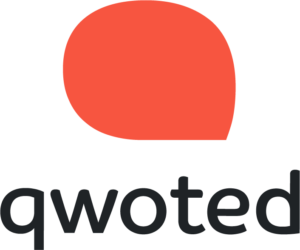Qwoted 100 Q&A: How Sydney Sonneville gets her Highwire act together

As an account manager at Highwire PR, Sydney Sonneville can proudly claim that she belongs to a female-founded, independently owned firm that dubs itself “home of the brave.” Based in the company’s Chicago office, Sonneville has established herself after nearly two years at Highwire as a rising star in the digital health space, mixing PR smarts with a refreshing brand of humility.
The latest spotlight PR pro in our Qwoted 100 series, Sonneville talked to us about the values and work ethic that inform her approach to the craft. Here, she offers a refreshing take on what it means to practice PR at a time when pressure to perform in the media filed is reaching stressful new highs — but how leaders in media relations can manage and master the stress through tactical thinking and acting.
Qwoted: What do you see as the future of PR—technologically, strategically, or in any category you’re passionate about?
Sydney Sonneville: The pandemic has encouraged PR people to increasingly communicate with empathy – both to journalists and to customers on behalf of the brands we represent.
Brands have stepped away from mass-marketing and overselling and have instead learned to embrace trust-building and transparency. PR professionals have recognized the need for their clients to articulate their mission through purpose rather than profit messaging.
PR’s role in this hybrid environment is to facilitate meaningful connections and lead communications with compassion, contribution and gratitude.
Qwoted: What do you think you do that other PRs could learn from?
Sonneville: I tend to de-prioritize the upfront “storytelling” in my pitches and instead focus on sharing topics my sources can speak to, along with a quick overview of what makes their background and company interesting.
I encourage teams to “fail fast” when it comes to media pitching. Is there an angle our client wants to speak to that’s not landing? An announcement that’s getting yawns? Instead of following up with media contacts for the umpteenth time and risking a relationship, pivot quickly to another idea that may be more of interest (and perhaps consider revisiting the topic another time).
Qwoted: What’s your toughest challenge with reporters?
Sonneville: It can be tough to find the balance between being helpful or a nuisance. Shout out to Mario Aguilar at STAT for being such a good sport whenever I have news to share!
Qwoted: How do you approach breaking through the noise floor to get effective coverage?
Sonneville: I counsel my clients to speak to breaking news within their industry and offer their own perspective. I ask my clients what data they have access to (within their platform, from surveying their customers, etc.) that may have good value for PR. And I’ll offer a source, data or a resource instead of pushing reporters to cover a certain “thought leadership” angle I’ve come up with. They likely already have their own stories in mind, which is where PR can come in to help add color and perspectives, or collaborate on a story’s focus.
Qwoted: How does PR in 2022 square with the future of journalism?
Sonneville: Journalists are being asked to take on more beats, push out more stories and prioritize topics that will get clicks. PR people can support them in this way by making sure our communications are personalized and relevant. Make note of how individual reporters prefer to receive communications. Then, couple this with being a strategic advisor to clients’ communications on social, in blog posts, in press releases and elsewhere to ensure that news value comes through.
Qwoted: What advice would you give to those seeking to find an effective PR person?
Sonneville: For journalists: Who’s coming to you with interesting story ideas/sources and is willing to collaborate on a unique angle? Are they offering to set you up with other experts that their colleagues work with (not their own clients) to help get you additional POVs? Do they ever reach out without an “ask” attached? Give a chance to the PR folk who make an effort to read your stories, build a relationship and offer follow up ideas for your reporting.
For employers: Ask your PR candidate where they’ve landed coverage and secured opportunities, which journalists they have relationships with and how they approach pitching. Consider giving them a project with an overview of a potential client and see how they turn traditional brand/marketing language into newsworthy details for reporters, and assess how they connect the company to current trends in the media.
Qwoted: What is your golden rule of PR?
Sonneville: It’s so important to create genuine relationships instead of one-off, transactional connections (shout out to freelancer Kelsey Ogletree for this advice). Reach out to friendly reporter contacts without “a PR ask” attached every once in a while. That can look like a simple news FYI with no expectation of coverage, a note probing to see what they’re working on, a reaction to their recent story, a congratulatory note, or a simple check-in to see how they’ve been doing.
Qwoted: Anything else to add?
Sonneville: To both PR pros and journalists: Give each other some grace! As a PR person focusing on the digital health space who’s pitching health reporters, it’s a wild time for both parties given the news on reproductive rights being overturned, health disparities worsening, and the resulting consequences of the pandemic. Journalists’ role of covering this news, coupled with PR’s task to insert their clients, can be complicated to navigate.
Sydney Sonneville is an account manager at Highwire PR. You can email her at sydney@highwirepr.com and connect with Sydney on LinkedIn.
Lou Carlozo is Qwoted’s Editor in Chief and the Editor/Publisher of Talking Biz News. You can email him at lou@qwoted.com and connect with Lou on LinkedIn.
POPULAR POSTS
